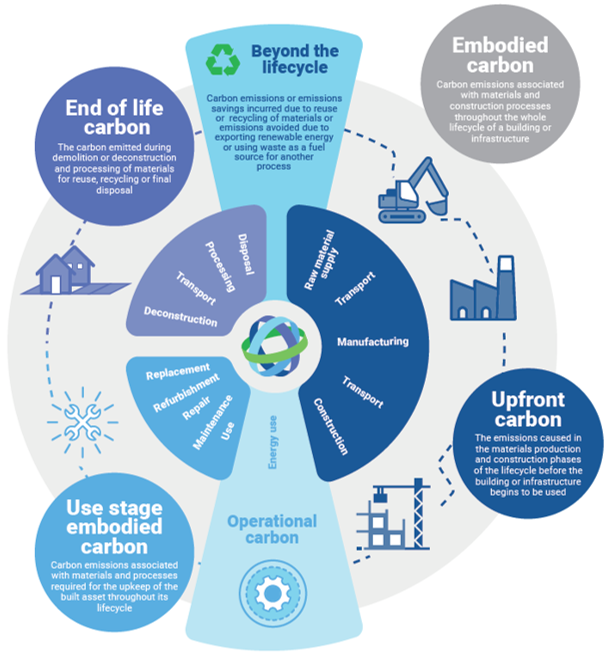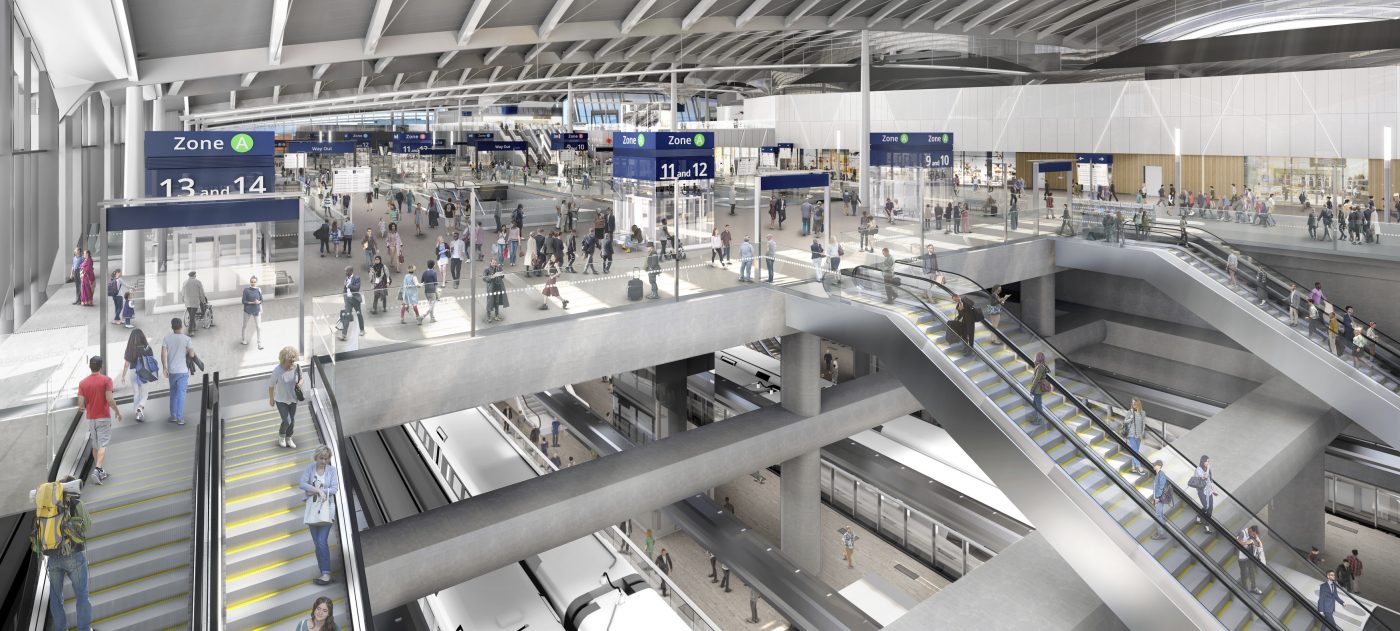Becoming net zero heroes: decarbonizing the entire asset lifecycle
The building and construction sector annually accounts for roughly 10 billion gigatons of CO₂ emissions, which is about a third of all of the world’s CO₂ emissions. Worryingly, this figure is likely to prevail leaving us short of keeping to the 1.5-degree commitments made in Paris in 2015, and even leading to a predicted 2-degree rise by 2050. To tackle the problems in this sector, there is a deeper underlying carbon issue.
The demand for new buildings by floor area is expected to double or increase by 240 billion square meters by 2060. This entails a significant demand for new building materials and construction activities in the coming years. Currently operational carbon emissions account for 72 percent of emissions from the built environment sector; embodied carbon which comes from the energy put in to produce and transport materials makes up the rest. By 2060, this ratio will change with embodied carbon dominating the emissions related to the built environment sector at 57 percent and operational carbon (from heating, cooling, lighting and other activities) at 43 percent. With better energy efficiency and automation, operational emissions may well come down further — but because of the new building demand, embodied carbon is only going to go up as raw material usage is predicted to double compared to today.
What does this mean for the built environment sector?
In rapidly urbanizing cities like Hong Kong, we must strive to design out carbon before the project gets to site. While the pressing demand for new housing and infrastructure threatens to overshadow climate considerations, we, as carbon practitioners, must look at the life-cycle of a project to identify the opportunities for carbon reduction — and savings — at the different stages.

The updated PAS 2080 standard for whole life carbon assessment (LCA) provides a framework which covers not just operational and embodied carbon but also upfront, use stage and end of life carbon, thereby enabling followers of the standard to identify the relevant stages for reduction interventions.
PAS 2080 places great emphasis on data and evidence, particularly with reference to BS EN 15804, the standard for sustainability of construction works and services. This standard harmonizes the structure for environmental product declarations (EPD) in the construction sector, making the information transparent and comparable.
Case studies
- Easing Sydney’s Congestion – Pavement design guide
AECOM was designer for the Easing Sydney’s Congestion (ESC) project — a A$16 billion program to ease congestion across Sydney, addressing pinch points and public transport upgrades. Transport for New South Wales (TfNSW) requested a design guide providing an overview of pavement technologies utilized on ESC and recommendations for successful implementation. This included comparisons of environmental impacts (including carbon) between the selected designs against alternate and available business-as-usual technologies in like-for-like applications, quantified using LCA.


Image courtesy: AECOM x ICE – Becoming Net Zero Heroes symposium Among other key findings, AECOM’s research shows that substitution of hot mix asphalt with warm mix, together with use of recycled concrete, can reduce embodied carbon by 30 percent. Further findings showed that in-situ stabilization has poor carbon performance and binder impacts (lime, bitumen) dominate over aggregate impacts. The ESC pavement design guide is a leading example for the implementation of sustainable pavement technologies.
- Tackling Carbon on HS2
High Speed 2 (HS2) is a new high speed rail line being built to better connect people across Britain. It is the largest infrastructure project in Europe and the most important economic and social regeneration project in decades.
Image courtesy: High Speed Two Ltd. AECOM is assisting HS2 across various work packages, including whole-life carbon assessments of early-stage optioneering, quantitative and qualitative carbon assessments, whole-life impacts of design, and broader sustainability and environmental management.
HS2 has committed and been certified against PAS 2080 (Carbon Management in Buildings and Infrastructure), and with this, within their Net Zero Carbon Plan, have several targets for cutting carbon emissions from construction, maintenance and operation, much of which are driven by design through “build nothing, build less, build clever and building efficiently.”

Image courtesy: AECOM x ICE – Becoming Net Zero Heroes symposium HS2’s Net Zero Plan not only underlines the progress of the project thus far but presents the project’s carbon mitigation ambitions in areas like concrete and steel (reduced by 50 percent), HGV transport (reduced by 11 percent), and the elimination of diesel on HS2 construction sites. Collaboration with HS2 on these and others are key in enabling HS2 to reach its net zero goals.
- Hong Kong’s Northern Metropolis
AECOM is working on the Northern Metropolis development, a 300 km2 designated space where 2.5 million people will find homes, work and living facilities, serving as a strategic link to the Greater Bay Area on the mainland. This is a once-in-a-lifetime opportunity to build a city from the ground up while prioritizing its decarbonization.
Illustration of the Northern Metropolis for reference purposes Implementing better design planning and integrating sustainable solutions from the very beginning are key in ensuring that we future proof our cities. AECOM is playing a key role to be part of this ambitious goal. The AECOM Hong Kong team is transforming the Northern Metropolis into an eco-conscious development through planning, engineering and design works with sustainability, resilience and environmental, social, and governance as pillars in the development areas of the New Territories North New Town and Man Kam To, San Tin/Lok Ma Chau Development Node, and the widening of the Yuen Long Highway.
The array of smart, green and resilient initiatives developed by AECOM aligns with Hong Kong’s avowed target of carbon neutrality by 2050.
What have we learned from these lessons?
- The path to net zero is essential for future proofing the built environment. As engineers and planners, we must take ownership for not taking “no” for an answer when it comes to embedding both operational and whole life cycle.
- There are tools and frameworks like PAS 2080 to guide us towards making the right choices for decarbonization at different stages of a project.
- Carbon management planning is important for creating a clear roadmap towards net zero projects and prioritizing opportunities with realistic carbon savings. Incremental action is crucial, rather than waiting for a perfect solution.
- Collaboration is vital across the spectrum of stakeholders involved in the built environment because it will take everyone across the entire supply chain, working in tandem, to solve the net zero challenge.
Read related content
We’re committed to accelerating decarbonization efforts for both ourselves and our clients. Discover more about our ScopeX approach and the global journey to net zero in our article:
‘ScopeX™: validating and evidencing our decarbonization approach globally’







